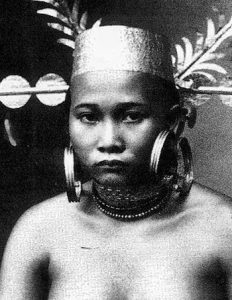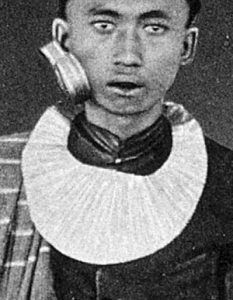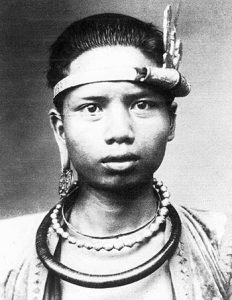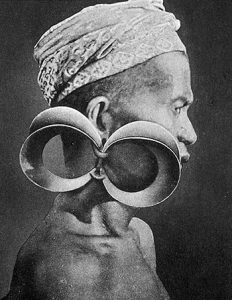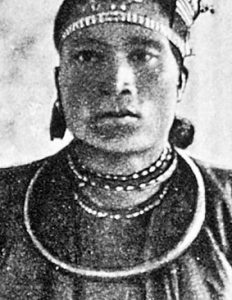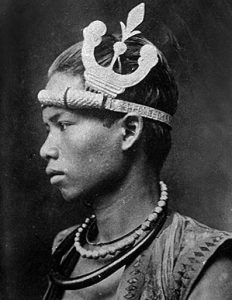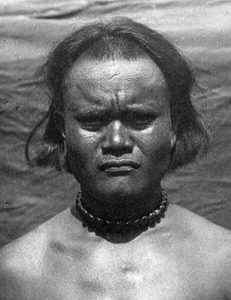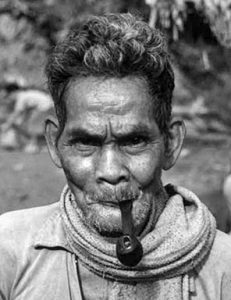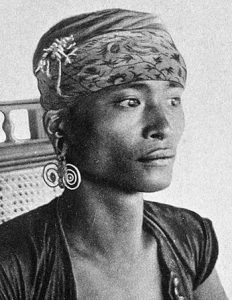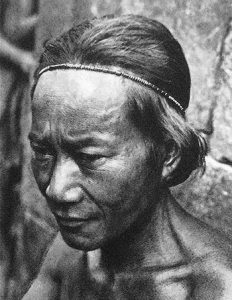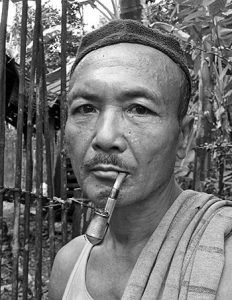
Pencetakan Offset adalah cara pencetakan untuk volume tinggi dan secara umum telah dilakukan untuk keperluan komersial. Ciri khas dalam cetak offset yaitu diperlukan penggunaan Film dan Plat cetak (almunium Plate) yang akan dimanfaatkan sebagai media transfer document yang hendak dicetak ke permukaan media kertas, plastik, dll. dan dukumen yang akan dicetak diisi tinta dari roll mesin. Percetakan offset memiliki harga yang cukup tinggi jika volume pencetakan dalam kategori sedikit, karena percetakan offset memerlukan pelat & Film. Satu pelat mewakili satu bidang dokumen, satu warna dan jenis. Semakin banyak jenis dokumen dan warna yang digunakan, jumlah biaya yang harus dibayar pun semakin besar. Selain pelat, harga percetakan offset juga ditentukan oleh jenis kertas, paduan warna, ukuran kertas dan kualitas warna.
Keunggulan dengan pencetakan Offset :
___1. Hasil cetak pada kwalitas warna adalah jauh lebih tahan lama (tidak cepat pudar) dibandingkan menggunakan print digital.
___2. Harga Pencetakan dalam kwantitas banyak akan jauh lebih murah dibandingkan digital print.
___3. Dapat melakukan pencetakan di berbagai permukaan jenis media kertas yang tidak dapat di lakukan oleh mesin digital, seperti dapat mencetak dalam ketebalan kertas sampai 400gr, mampu mencetak pada bidang bermotif seperti Samson, Embossed /Engrave Paper, kertas recycle, dapat mencetak diatas kertas ukuran sampai 100 x 70 cm.
___4. Dapat mencetak pada bidang kertas yang relatif tipis seperti yang sering digunakan untuk Buku Nota NCR, HVS & Dorslag
___5. Dapat menggunakan tinta berjenis Emas, Silver dan bilamana mencetak dengan warna gradiasi Abu-abu (Grayscale) maka hasil akan jauh lebih akurat dari pencetakan digital.
___6. Dapat mencetak dengan tinta Full Block dengan hasil yang tajam dan merata. Pencetakan tinta dengan cara block ini sering dipergunakan untuk pembuatan design type negatif.
PERCETAKAN MURAH *REPUGRAF SURABAYA
Whatsapp. 081216017773
Office :
Jl. Sepat Lidah Kulon Gg. 1 No. 242 Surabaya 60213, Jawa Timur - Indonesia
Tlp./Fax. : 0812 1601 7773
Follow Social Media.
Site : www.republic-grafika.blogspot.com
Site : www.Instagram.com
Site : www.Tiktok.com
Site : Facebook Fanpage
Site : www.Pinterest.com
Email : republicgrafika@ymail.com
Direct Call :
Telkomsel. 0812 7899 9404
Telkomsel. 0812 1601 7773
The History of Nias
Early history
It is not exactly known when the first people came to Nias or where they came from. But it is known that there was another tribe, or several, living on Nias before the current ethnic group (Ono Niha) established themselves on the Island some 700 years ago. This is mentioned in oral tradition and backed up by archaeological evidence.
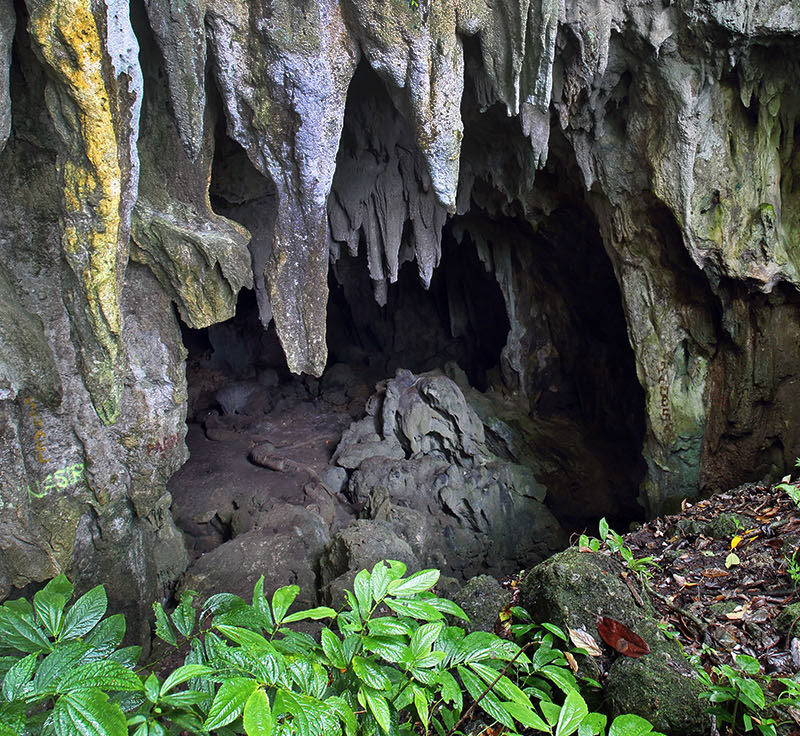
Tögindrawa cave near Gunungsitoli.
In 1999 the Nias Heritage Museum in collaboration with the University of Airlangga started excavating Gua Tögindrawa, a large cave near Gunungsitoli. Remains and tools were found that showed that it was inhabited more than 12,000 years ago. Subsequent excavations by the Archaeological Institute of Medan concluded that human habitation ended 700 years ago. One theory is that this cave was inhabited by an early tribe which was decimated by the newcomers.
150 AD - 700 AD

The Greek geographer Ptolemy was one of the first to write about Nias.
Nias Island is positioned near one of the main cross roads of South East Asia and has a long history of interacting and trading with other cultures. In early Chinese, Greek and Arab writings Sumatra and the area around it is describer. As early as 150 years AD the Greek writer Ptolemy mentioned five islands west of Sumatra. They were referred to as the “Camphor Island” off which Nias is the largest. Camphor is a kind of resin extracted from trees in Sumatra. From the 7th century onward the islands west of Sumatra were well known by both Chinese and Arabs merchants and sailors. Niasans sold their produce to passing ship in exchange for metals and textiles.
800 AD - 1100 AD
The first written account of Nias comes from Persian merchant Suleyman who in 851 AD visited Nias Island, noticing that the local noblemen wore lots of beautiful gold jewellery and had a penchant for headhunting. A young man wishing to be married, must first have decapitated an enemy. It was also noted that Nias Island had complex social structures. In 1154, Edrisi wrote: "The Island is occupied by a large number of tribes." Nias oral tradition mentions six different tribes from this times of which one of them was the tribe Mbela whose descendant’s lived in trees.
1100 AD - 1250 AD
Indians from the Vassal Kingdom Aru established a gold mine in Padanglawas in Sumatra. This mine produced a lot of gold and some of it made its way to Nias. Nias noblemen wore lots of gold jewelry to display power and wealth, despite the lack of gold mines on Nias.
C. 1350 AD
A wave of immigration brought the ‘Ono Niha ’tribe to Nias around 1350 AD. The majority of Nias people today are the descendants of this ethnic group. It is believed that they arrived via Singkuang, a port in Sumatra facing the island of Nias. The first settlement was established in Sifalagö Gomo in South Nias. The Ono Niha people had superior knowledge of building techniques and the use and manufacturing of iron tools. They quickly became the dominant group in the area. From Gomo they spread across the Island until all Nias people called themselves Ono Niha. Around this time the cave dwelling tribe in Gua Tögindrawa disappeared. It is not known if the older tribes on Nias were extinct or assimilated with the Ono Niha.
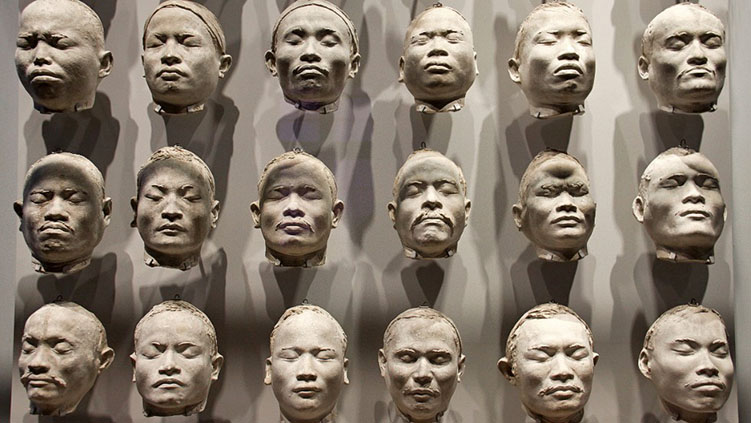
Plaster casts of Nias faces exhibited at the Rijks Museum in Amsterdam. They were made by the Dutch explorer Kleiweg de Zwaan in 1910 as part of his research into the ethnic origins of Nias people.
It is not clear where the Ono Nias tribe originated from, but many of the first arrivals on Nias had names like Hia or Ho, which are also common in China. Recent DNA testing found that the Nias people are closely related to Austronesian people from Taiwan and the Philippines, who also originated from southern China.

The Armada of Zheng He in Sumatra.
Year 1403 – 1424 Chinese influence
In 1416, the Ming Dynasty Chinese army under the command of Admiral Haji Sam Po Bo seized an area in Sumatra opposite Nias Island. There they established a sawmill, and occupied the port of Singkuang. This port was located south of the current location of Sibolga. The Chinese colony in there became very influential to the island of Nias, and many traders from Singkuang eventually settled on Nias.
Year 1513 – 1642 Acehnese influence
On the orders of Sultan Ali Mughayat Syah, the Sultanate of Aceh annexed and occupied several ports on the west coast of Sumatera in 1513. Acehnese ships also frequently raided Nias, particularly in the north. To this day some beaches there are known as Pantai Aceh (Acehnese beach) and are remembered as places where the raiders used to land to capture Nias people for the slave trade.
In 1642 seven large ships from of Aceh landed on the East coast of Nias. Since then Acehnese clan of Polem have been firmly established on Nias. Today many Acehnese descendants from the Polem clan can be found in the Mudik area of Gunungsitoli.
1668 VOC Dutch East India Company

Coins made by the VOC company for use in the Far East (Indonesia).
The Dutch East India Compay arrived in Indonesia in 1603. In just a few years they dominated trade in what is now Indonesia. In 1668 VOC made contracts with noblemen and villages in Nias near the area that is now Gunungsitoli and Hinakos Islands in the west. The VOC established its first base on Nias in Gunungsitoli, where they built a harbour and store houses. In 1740 the VOC left Nias for good as the companies influence in Southeast Asia was veining.
1750 slave trade
Slaves had always been taken and kept by the tribes of Nias. When villages fought each other, captive enemies were kept as slaves by the victors. Acehnese raiders also came to Nias to capture people that were sold as slaves elsewhere. But it was only in 1750 that Nias people themselves became actively involved in the slave trade. The chieftains of Nias started selling captured enemies in exchange for gold. At that time many young people of Nias were sold across the sea, to Aceh, Padang, Batavia (Jakarta), Malaysia, Seychelles and Reunion. It was the Noblemen of Nias who drove the trade, and through it they amassed great wealth. This wealth was used to create some of the finest architecture, statues and weaponry in the region. A hundred years later it was noted that the Nias culture was one of the most advanced tribal society’s in Asia. At this time the culture on Nias revolved around war, and most of the efforts and resources went towards fighting others or defending against attack.
1821 to 1832 European influences

Sir Stamford Raffles, founder of Singapore, also established a trading post on Nias.
For a short time after the VOC left Nias in 1776 the British took over the trading post in Gunungsitoli, but soon abandoned it as it was not profitable enough. For a few decades there were no Europeans on Nias until 1821 when the British again tried to establish themselves on Nias. However the British only stayed until 1825 when the Dutch returned to officially take control over Nias. By this time Indonesia was colonialized by the Dutch and knowns as the Dutch East Indies.
Catholic Pastors Vallon and Berard from France were the first in a long row of missionaries who came to Nias. Both of them died from disease within 3 months of arriving on the island.
1840-1864: The Dutch colonialization of Nias
For decades the Dutch only controlled a small area around the town of Gunungsitoli. To leave this area for any European was extremely dangerous due to the constant intertribal warfare and marauding headhunting parties. In 1840 the Dutch decided to try to take control of the whole island. A number of bases were set up around the island in order to increased trade as well as establish military control of all of Nias. However the control was limited to the forts and their immediate surroundings. Sporadic fighting and open warfare continued for decades, especially in the south where some of the most powerful village federations (know as "Öri") fiercely resisted the Dutch. Big battles with thousands of warriors were fought in the hills behind Lagundri. The village of Orahili was particularly combative and they fought the Dutch on and off for decades. At times forts and trading posts were abandoned as they became too dangerous and costly to maintain. The Dutch often burned whole villages to the ground as retaliation for attacks.
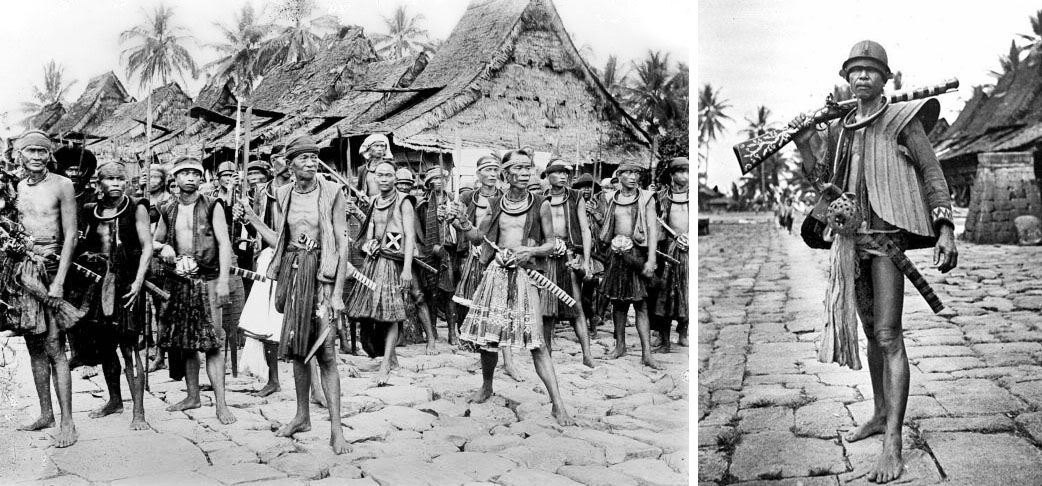
The fierce warriors from South Nias repeatedly fought off Dutch colonial troops.
1843: East coast earthquake & tsunami
A tsunami hit the east coast of Nias mainly affecting Gunungsitoli and the coastline south of town. Many buildings were destroyed by the earthquake and subsequent tsunami. Many Dutch buildings including the fort were badly damaged.
1861: South coast earthquake & tsunami
Lagundri village and port was destroyed, including the Dutch fort where 16 soldiers died. In the aftermath of the disaster warriors from Orahili village attacked the Dutch fort. Because most of the gunpowder had been damaged by the seawater, the Dutch soldiers could not fight back and had to evacuate, leaving weapons and supplies behind.
1865: Christianity
The first protestant missionary, German E.L. Denninger arrived in Nias in 1865. He is widely credited with bringing Christianity to Nias. The first years saw very slow progress, as it was almost impossible to travel safely out of Gunungsitoli. It took nine years before the first locals were baptised. After 25 years there were only 706 indigenous converts, but Christianity had got a foothold on the Island. As the north of Nias was the first area to be put under colonial control the missionaries were more successful there than in the restive south.
1900 -1914 Full Dutch control
In 1900 the Dutch sent a large army contingent to Nias to finally secure the areas outside of Gunungsitoli. Full control of the whole island was only established in 1914, one of the last areas to be ‘pacified’ by the Dutch in all of Indonesia.

In 1914 the warriors of South Nias agreed to stop fighting the Dutch. This was the first time all of Nias Island was under full Dutch control.
One of the lasting impacts of Dutch colonialism was the breaking up of the traditional village structure. Traditionally Nias villages where built on hilltops for defensive purposes. The Dutch constructed a road network on the island and decreed that local people had to live next to these roads. This had two purposes; goods from outlying districts could effectively be transported back to the capital of Gunungsitoli and Dutch soldiers could easily reach villages in case of rebellions.
1907: West coast Tsunami
Wunga island on the northwest-coast of Nias was hit by a powerful Tsunami. All buildings were destroyed and about 100 people died on the island.
1916: The Great Penitence
After the Dutch had pacified all of Nias and roads were improved the missionaries could reach all areas of the Island. The number of Christians converts was slowly increasing. 1916 saw a huge jump in converts due to an unusual event known as The Great Penitence (Fangesa sebua). The Great Penitence was a mass conversion movement that began in Helefanikha village near Gunungsitoli and then spread rapidly throughout the island. The prime movers behind this movement were not the missionaries but local converts. During the initial religious fervour many traditional practises were banned. Headhunting and slavery had already been outlawed by the Dutch. But other aspects of Nias culture such as the raising of megaliths and carving of wooden statues were now also banned by Nias priests who went from village to village spreading Christianity. Many cultural artefacts that were seen as connected with the "old" religion were destroyed.

1905-1935 Religious services in the Church 'Rijnsche Zending' in Gunungsitoli.
1942 – 1945: Japanese occupation of Indonesia
During World War II Japan occupied Indonesia, known then as the Dutch East Indies. The Dutch capitulated in April 1942 and Japanese soldiers arrived to Nias soon after. Prior to the occupation there was a tragic incident on Nias. The Dutch had interned all Germans in Sumatra at the outbreak of war. As the Japanese Army approached the Dutch tried to send the prisoners (mostly missionaries and their families) to India on board the merchant ship “Van Imhoff”. Near South Nias it was attacked by Japanese torpedo planes. 477 German civilians died in this tragedy.
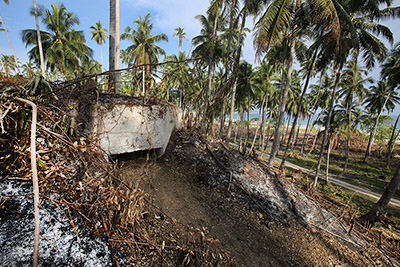
A Japanese WW II bunker in Toyolawa, North Nias. There are several bunkers like this one around Nias Island.
Initially, most Niasans welcomed the Japanese as liberators from their Dutch colonial masters. This sentiment changed as people on Nias had to endure many hardships to support the Japanese war effort. Bunkers and fortifications were built around the island in preparation for an allied invasion. Today some bunkers can still be seen in Gunungsitoli and elsewhere around Nias. Japan surrendered in August 1945, but it took several weeks before the news that the war had ended reached the island.
Independence
Indonesian independence was declared two days after japans unconditional surrender on the 17th of August 1945. This day is known as Hari Merdeka or Independence Day in Indonesia. Due to its isolation, it took seven weeks for the news to reach Nias. Local Nias leaders immediately declared loyalty to the new Indonesian republic. As there was no Dutch on the Island at the time Nias was spared from the fighting that took place in many other places of Indonesia. During 1947 a Dutch ship bombarded Gunungsitoli, Hinakos and Telo Island, but there was no ground fighting. It would take four years of armed conflict and political negotiations before the Dutch recognized full Indonesian independence.
After Indonesian Independence, there was a period of several years with political instability as different factions struggled to control the new nation. Nias avoided conflict by staying loyal to the central powers that eventually became the rulers of modern Indonesia. During the following decades there were many social and political upheavals in Indonesia but most of them completely bypassed Nias. At this time Nias Island was largely ignored by the rest of Indonesia. It was the poorest and least developed regency of North Sumatra Province. No real effort was made to develop the island. The interior of the Island had very little infrastructure and many villages could only be reached by foot.
1975: Tourism
Starting in the 1930’s small cruise ships had regularly visited Nias. They usually stopped in the south and visited traditional villages. Local villages sometimes put on stone jumping and war dance performances for them, usually in Bawömataluo village. This was the first tourism on Nias, but it was limited to a few visits per year. In the 70's the ship MS Prinsedam from the Holland America line visited Teluk Dalam every second Saturday between October and March. During these visits lots of tourist came ashore, but only for a few hours.

The first surfers in Sorake lived in this hut.
More regular tourism started in 1975 when three Australian surfers came to Lagundri Bay in south Nias looking for waves. In Sorake they found one of the best, most consistent surfing waves in the world. Since the 80’s Sorake Beach have become a well know surfing destination. But due to the remoteness of the island and lack of infrastructure it never really developed beyond being a destination for hard-core surfers.
10 November 1995
First stone laid for the building of the Nias Heritage Museum in Gunung Sitoli.

The foundation for the Museum is laid down by Pastor Johannes during a ceremony in Gunungsitoli.
2004: The tsunami in Aceh and Nias
The Boxing Day tsunami hit Nias Island on the 26th of December 2004. The west coast bore the brunt of the destruction with many fatalities, but all coastal communities were impacted. Many boats along the coast were swept away and houses were inundated by seawater.
2005: Earthquake on Nias
On the 28th of March 2005 a massive 8.7 earthquake struck just north of the Island. Many buildings collapsed resulting in more than 600 dead and thousands injured. Infrastructure across the island was severely damaged and many communities were completely cut off.

Destroyed houses in central Gunungsitoli after the devastating earthquake on 28th March 2005.
Apart from the obvious loss of life and destruction, the earthquake also changed the landscape of the Island. Due to the land uplift caused by the earthquake the whole island was tilted on its side. On the northwest corner of the island uplifts of up to 2.9 meters were recorded. This caused dramatic changes to the coastline; islands increased up to ten times in size and new islands appeared where none had been before.
2005 – 2010: Rebuilding Nias
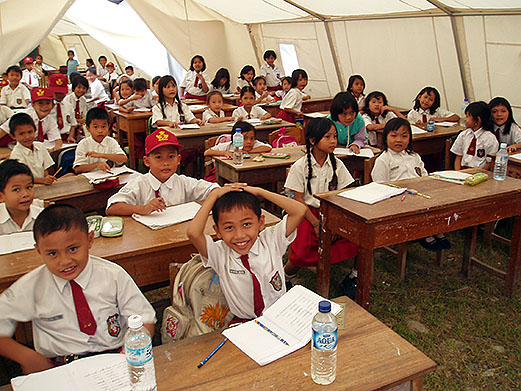
Children attend school in temporary tents classrooms after the 2005 earthquake.
Once the immediate rescue operations were over by the end of 2005 the reconstruction-phase began. Between 2005 and 2010 many international and Indonesian organisations put in an enormous effort to re-build Nias. This period is sometimes referred to as the ‘NGO-era’. Organisations like the Red Cross, UNICEF, OXFAM, ILO, AUSAID and Caritas (and many more) sent staff to assist and advise with the rebuilding of Nias. Apart from a few missionaries this was the first time foreigners had worked on Nias Island since the Dutch left. Funds and technical assistance flowed into Nias like never before. The Museum worked closely with the development community during this time, particularly in the rehabilitation of hundreds of traditional houses and cultural sites.

2008 – 2009: Decentralisation
During a nationwide drive for greater regional autonomy in Indonesia, it was decided to split the administration of Nias Island into four regencies and one municipality. The new regencies were inaugurated between 2008 and 2009. This meant that many decisions would be made locally rather than in Jakarta.
Nias Today
As a result of the massive rebuilding effort, the infrastructure on Nias is better today than it ever was before the earthquake. One of the most remote corners of Indonesia is now connected to the rest of the country. While still considered remote it is now easy to travel to Nias and most parts of the island can be reached without to much difficulty. Many government services such as healthcare and education are slowly improving. Economic activities such as tourism are on the increase.
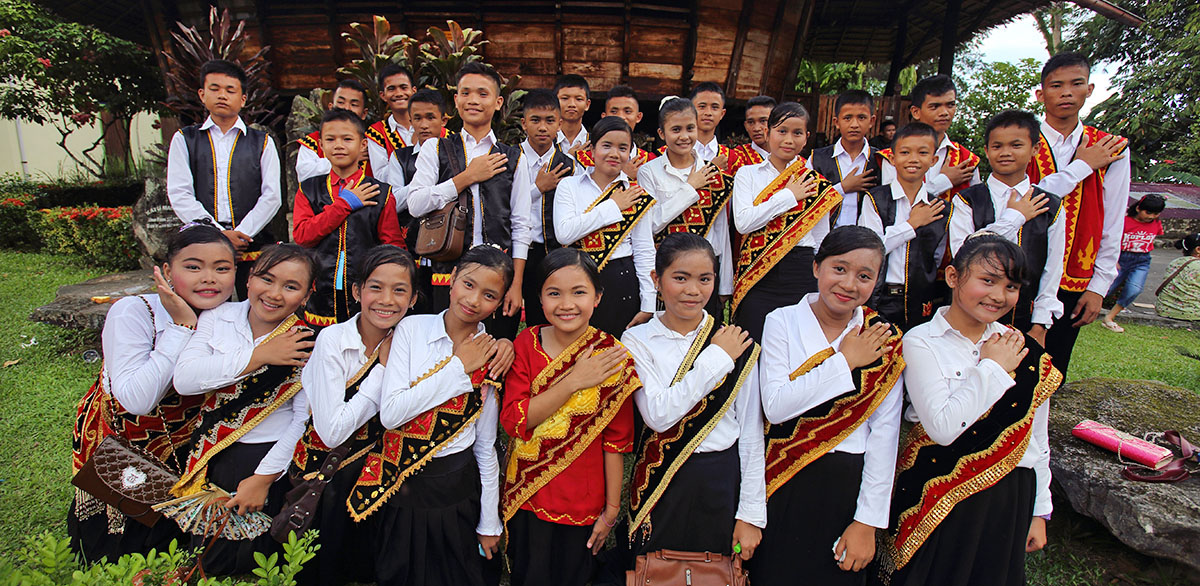
Young members of a cultural dance group at the Nias Heritage Museum.
Today among the people of Nias there is an increased interest in the cultural heritage of Nias Island and the importance of protecting it for future generations.
Historical images
Visit our Image Gallery containing Historical Images from Nias.
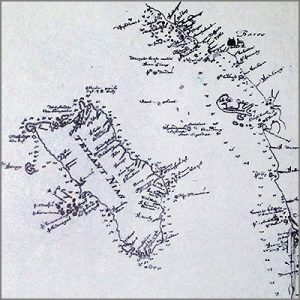
One of the first known maps of Nias by Gravehage in 1669

Another early map of Nias by Bellin from 1750

Nias map by Greenleaf from 1842
Nias faces from the past

